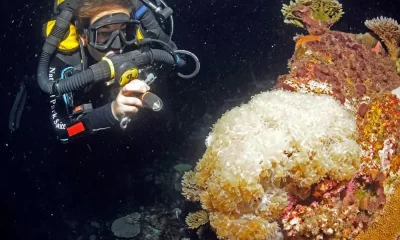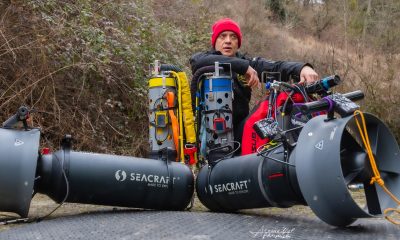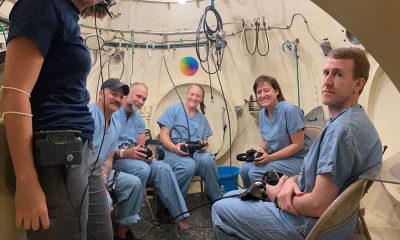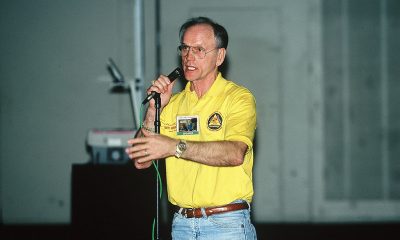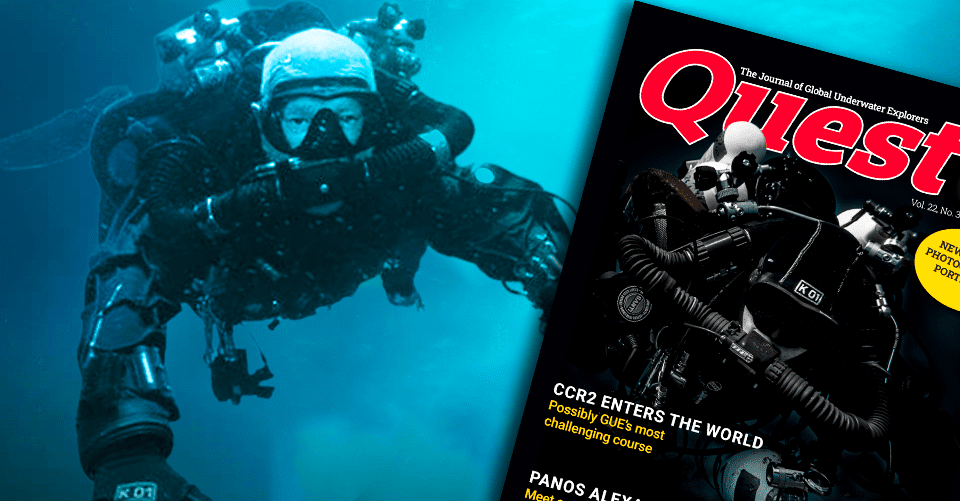
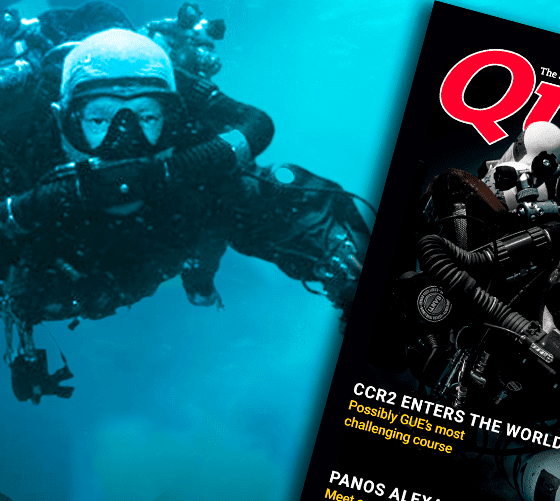
Community
What Drives Quest’s Eclectic New Editor-in-Chief, Jesper Kjøller
Veteran dive magazine editor/designer and tech instructor Jesper Kjøller has recently taken over the production of GUE’s quarterly membership magazine QUEST
Interview by Michael Menduno
Header Image: J. Kjøller in his element by Dimitris Fifis. Other images courtesy of Jesper Kjøller
Veteran dive magazine editor/designer and tech instructor Jesper Kjøller has recently taken over the production of GUE’s quarterly membership magazine QUEST and hopes to transform the 22-year old journal-esque publication into a stunning digital dive juggernaut. Here, InDepth chief Michael Menduno explores what motivates the Danish techmeister.
This month, Global Underwater Explorers (GUE) is debuting its newly re-envisioned, quarterly membership magazine, Quest, founded in 1999 when the organization was just getting started. The new design and format are the creative work of 57-year old Danish editor, writer, and designer Jesper Kjøller, who took over when founding editor Panos Alexakos retired earlier this year.
In addition to extensive publishing experience, Kjøller was the editor-in-chief of DYK magazine for nearly 15 years as well as founded and served as editor-in-chief of Dive the World. Kjøller, who is a GUE tech instructor and a recreational instructor trainer, brings a fresh perspective to the magazine and was instrumental in transforming Quest to an all-digital format, which is a bittersweet move on his part. The 25-year diving industry stalwart and musician laments the coming end times of print magazines and vinyl records.
We caught up with Kjøller on the week of the opening of the world’s deepest pool at Deep Dive Dubai, where he enjoys his role as senior marketing supervisor, in conjunction with his new position as Quest’s editor-in-chief. Here’s what he had to say.
InDepth: Jesper, you wear a lot of hats, err hoods. You’re a musician, a diver, a dive instructor, an instructor trainer, and an explorer. You’ve been an editor, a writer, a photographer. You do graphics design. You’ve organized diving conferences. You’re the marketing manager for Deep Dive Dubai, which just opened, and you’re now the new editor-in-chief of QUEST. Tell me, how do you think of yourself? How do you self-identify?
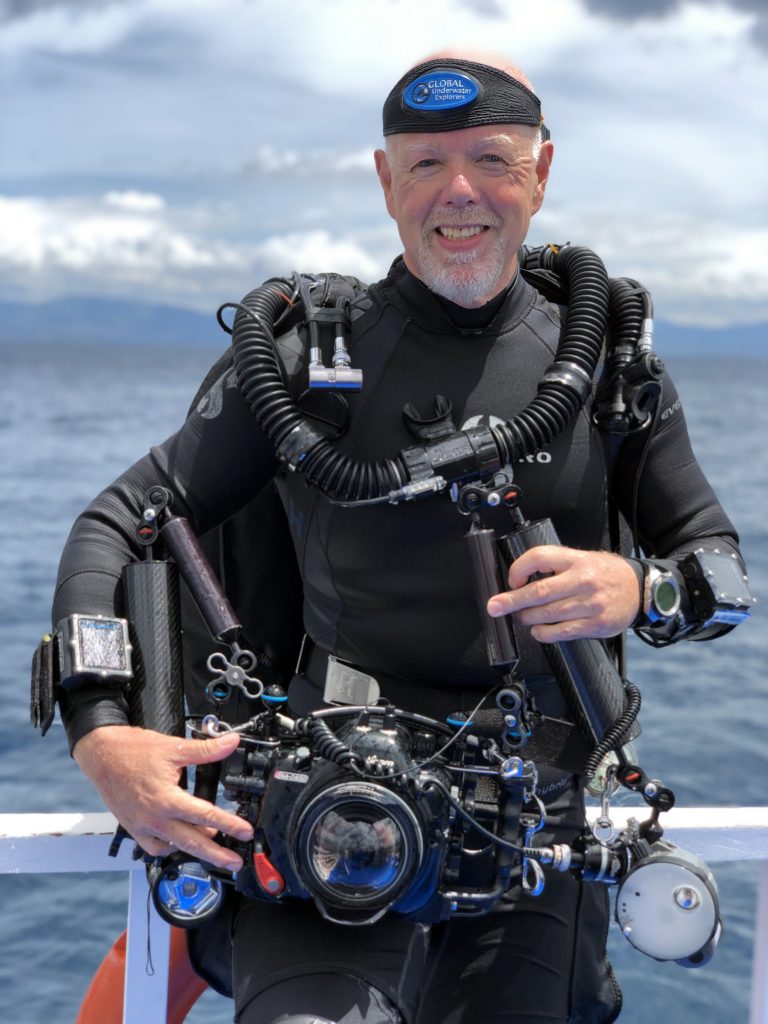
Jesper Kjøller: How do I identify with all this? I think the core of it all is storytelling. I’m curious, and I like to tell stories and refine information. I mean, being an editor—and you know this as well—is about taking things that are a little bit unorganized and refining them, putting them together and presenting them to the world. That’s a process that I always enjoyed.
And to be honest, it’s totally a coincidence that it ended up being about diving as a subject matter. It could’ve been anything. As I said, I really like the process of refining and presenting information and deciding what is important and what is less important and suggesting, how about this? Do you like this? That’s what an editor does.
I mean it was pure coincidence that I ended up being in charge of a dive magazine. It’s never something that I envisioned myself doing. I was the right man at the right place at the right time. I had no journalistic background. I had no photography skills and no designing skills at all. I simply learned by doing.
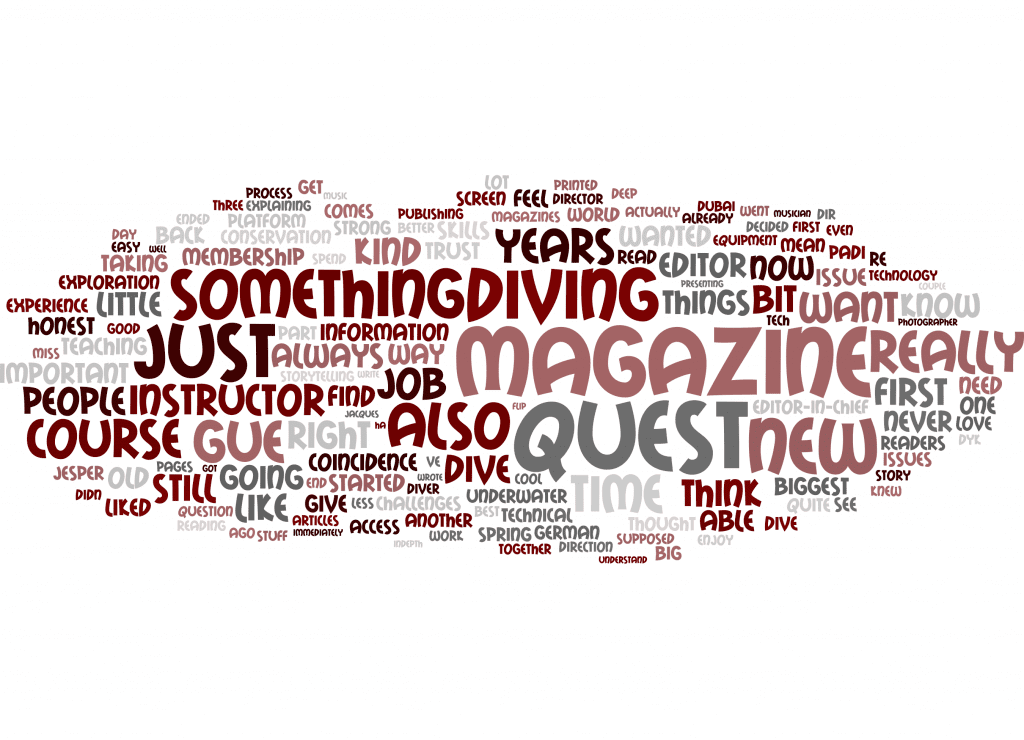
On-the-job training?
Yeah, simply, yeah. My background, before I started diving, was as a musician and teaching music. The common denominator in all this is teaching. I have a knack for finding ways of explaining things. And if people don’t understand, then I can always find another way of explaining whatever to them.
I love that process, and I love seeing people understanding after my third try of explaining something. That’s what thrills me, and it’s something that I grew up with because both of my parents were musicians and teachers. So, I had this from my childhood. As I said, it was a coincidence that it ended up being centered around diving. I was just lucky.
Lucky indeed! You’ve been a dive professional for more than 25 years. That’s significant. What is it about diving that keeps you coming back?
First of all, I think it’s super cool. There’s just something about the equipment and the whole world surrounding diving that has always appealed to me. I mean, I’m old enough to have seen Jacques Cousteau in the middle of the 70s when I was just a kid. We had a black and white television in our living room and there was a German TV channel that had Jacques Cousteau’s weekly French TV show. And it was so cool.
Many years later, when I did my first open water course, I immediately decided—this is what I want to do. This is so cool. I want to be an instructor. I want to be involved in this professionally; I want to teach people how to dive.
I also enjoy the combination of the technology and the knowledge that we are able to apply to survive in a hostile environment. We’re not supposed to be able to breathe underwater or to be able to dive down to the Britannic. To be able to combine knowledge, technology, practice, and skills to do something that’s out of reach of most people is very appealing to me.
You got started in magazines with the Danish diving magazine DYK, where you served as editor-in-chief for nearly 15 years (199-2013). That was your first editor job, right? How did you get started at DYK?
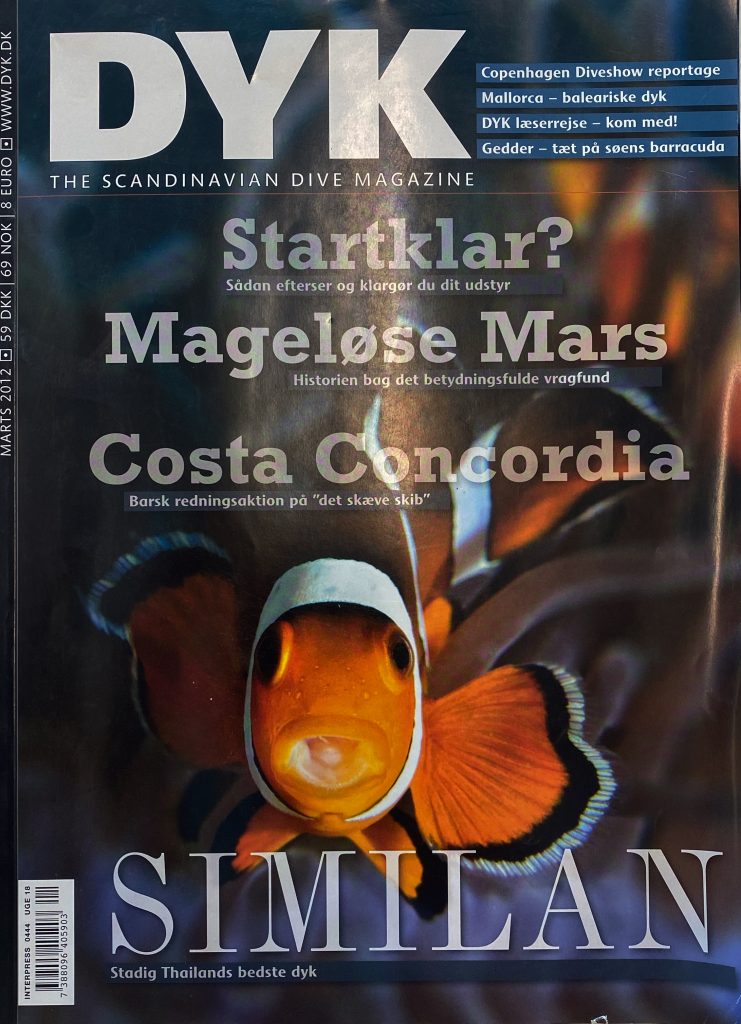
Yeah. So, back in the day, DYK was owned by the German publishing house that produced TAUCHEN magazine. They owned the Scandinavian publishing company. And to save money, a lot of the articles that went into the magazine were translated from German.
In 1999, I became a PADI course director, and I started subscribing to the magazine. It’s a coincidence that—the same year—I got really, really annoyed with the quality of the translations. Because I was reading the magazine, and in some instances, by mistake, they published entire spreads in German. I mean it was so clumsy; it was awful.
So, I approached then editor Peter Symes, who later left and went on to found and publish X-Ray magazine. I told him, “I happen to be a PADI course director, but I’m just approaching you as one of the readers. Honestly, I think you can do better.” So, Peter said, “OK join us,” and offered me a job. I wrote a couple of articles for them as a freelancer first. Interestingly, they published them and didn’t change a word. At the time, I thought, okay, if they are not changing anything, the story must really be okay.
That was my verification that I could write, because I had no experience doing it. I was not a good writer in school. I kind of hated it, to be honest. But storytelling and my teaching experience saved me in a way. I discovered I could draft a story and a narrative and get some kind of an arc to it. It was a natural gift I had, and the rest was history. Of course, I was really interested in the subject matter and knew a lot about diving, so it was quite easy for me to write articles because I was just sharing what I knew.
Before we talk about your new role at Quest, I wanted to ask you about your GUE journey. You were an instructor and PADI course director at the time. What attracted you to GUE and how has that journey gone?
I have this metaphor for divers. Remember those mechanical toys with a spring that you wind up? The tighter the spring, the longer the toy would do something. I always thought of divers in that sense. You do your first course and just being underwater and breathing is exciting. Then after a while you need to do something new, so maybe you take a night diving course, or start learning underwater photography, or you decide to become an instructor or whatever.
Every time you add something new, the spring gets a little tighter and now you have a renewed passion and something new to do underwater. For me, the spring was never wound as tight as it was when I did my Fundamentals Course. It was a complete eye-opener!
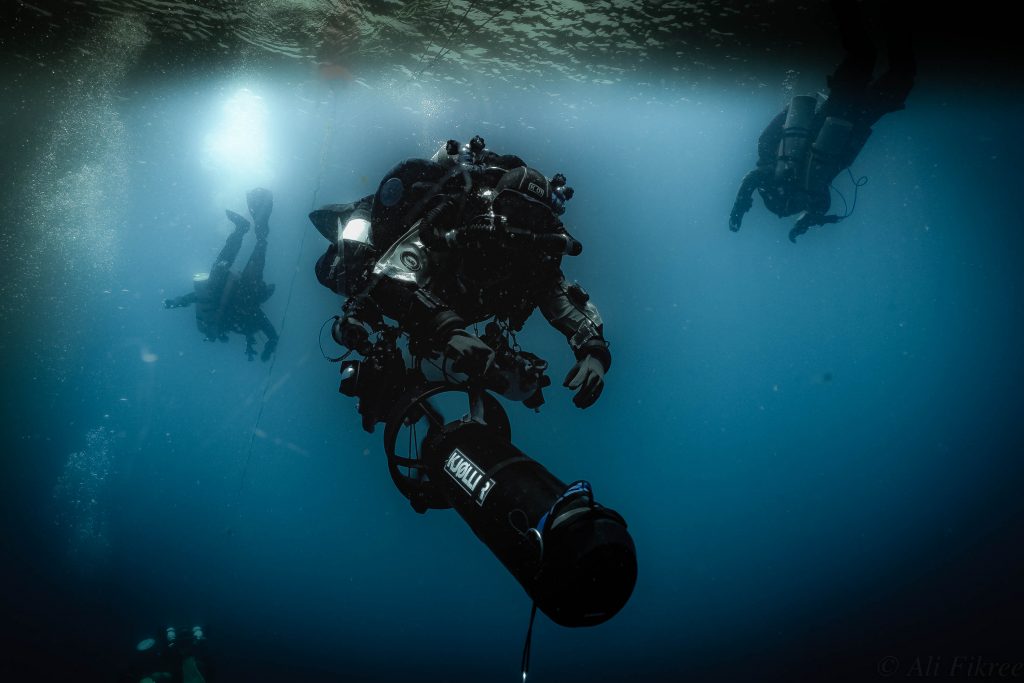
I know many people who had that reaction. How did you find your way to “Fundies?”
I was already a technical diver. I had done decompression dives. I had done a bit of cave diving, trimix and everything, but to be honest, I never really liked it. I was always a little bit apprehensive. I didn’t trust my skills. I didn’t trust my dive buddies. I didn’t trust my equipment. And I didn’t trust my instructor. It was not an optimal way to dive, especially back in Denmark, and particularly not in winter, doing deep dives in dark water that’s close to freezing, wearing a dry suit and dry gloves. The truth is I didn’t really enjoy it. Of course, I was supposed to do that kind of diving as an editor.
Then I read about DIR (“Doing It Right”) and George Irvine and Jarrod Jablonski, and I already knew about the Lundgren brothers in Sweden. I kind of had a feeling that was the direction I wanted to go. I liked the simplicity. I liked the configuration, and I liked the standardization—all these things. As luck would have it, there were a couple of Danish DIR warriors that were very loud on the Internet, and I kind of liked the way they explained things. So, I more or less went in that direction, but I never received any training. I just kind of dabbled in DIR, and I thought I was a GUE-style diver. But then, when I did Fundamentals, everything fell into place.
Your tech diving epiphany?
That was the first time I actually understood how all the components were supposed to fit together. I can’t say that I immediately decided I wanted to become a GUE instructor, but I did decide from then on that all of my tech diving was going to be with the GUE configuration and approach. Funny, I was traveling for the magazine at that time, so I started bringing long hoses and back plates and wings, and people looked at me and didn’t understand. But I was like, “Okay, this is the way I dive. Take it or leave it.” It’s not uncommon anymore, but 10 to 15 years ago some people had never seen a long hose and they thought they would be strangled if you used it.
Ha!! Yes, there have always been misconceptions about tech in the recreational world.
Long story short, I got very dissatisfied with what I was doing. I was a PADI instructor trainer also for PADI’s technical range, but they started simplifying and adding some really weird skills and stuff. I wasn’t happy with it and I couldn’t see myself teaching it. I realized that if I wanted to continue my passion teaching technical diving, then I needed to find a platform where I could really defend what I was talking about. So, I became a GUE instructor 10 years ago and never looked back.
As of this quarter, you’ve taken over as editor-in-chief of Quest from Panos Alexakos who just retired after producing the magazine for more than 20 years. What excites you about Quest and taking on this project?
I actually wrote an editor’s letter about that very question for my first issue. What excites me about Quest is that I’m always looking for ways of combining interests. If you can combine several interests in your work, then you have a very strong platform because you’re doing multiple things that you love.
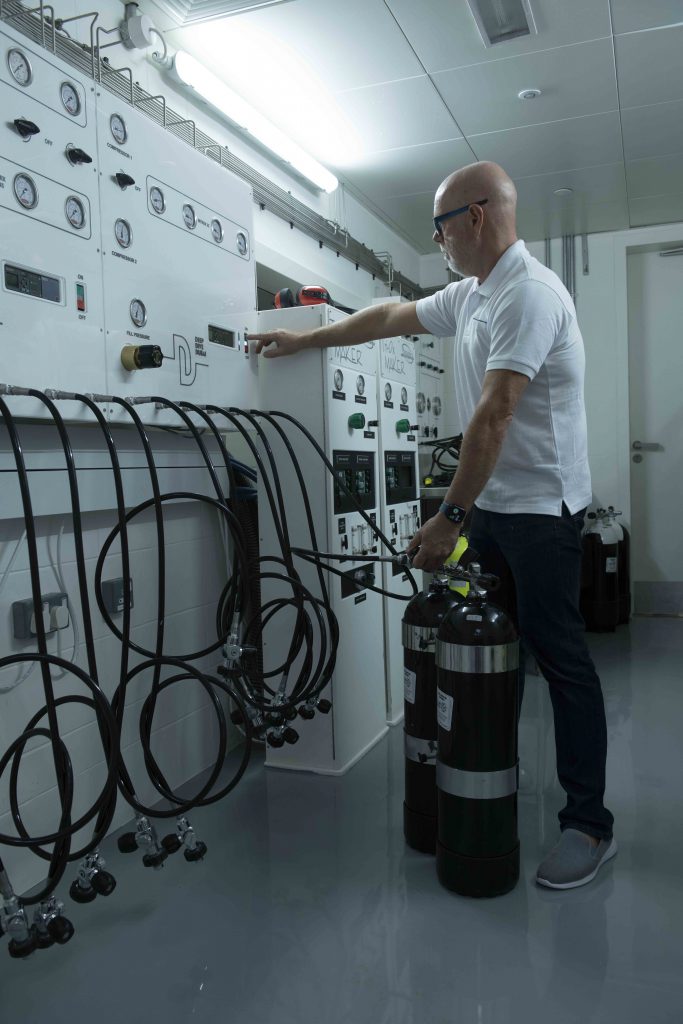
I have three major passions in my life. One is storytelling. Another is GUE and then I just happen to love magazines. So, what could be better? I feel really, really well-prepared for taking on Quest because it combines three of my biggest passions. The only thing that’s missing is some kind of music, but I’ll find another way of doing that. So to answer your question, I am passionate about taking over Quest because it’s a perfect combination of three things that I really enjoy.
Do you see any specific challenges with Quest or membership magazines in general?
There are challenges, but I feel that I also have an advantage because I know exactly who the readers are. The challenge is that I have to find a balance. First of all, I need to give readers what they expect, but I also want to surprise them a little bit and maybe give them something that they didn’t know they wanted. So that could be a little bit challenging. But on the other hand, I do know who they are. I don’t have to guess. It’s a fairly well-defined demographic.
For me, being an editor in the Internet age is quite a bit different than it was 25 years ago, say before Google. Because today, everyone can readily find information. So, we need to be able to surprise them and be a little bit assertive sometimes and say, “Trust me, this is interesting. This is something that you will want to spend 10 minutes reading.” Otherwise, they might not do it and miss that information. For me, it’s about establishing a relationship with the reader so they begin to trust that I’m going to give them a mix of things that they are expecting, along with some surprises and material they didn’t know that they wanted.
What are some of the topics and issues that you think are important right now in diving that you hope to cover with Quest?
That’s an interesting and important question because that’s another and perhaps my biggest challenge. I’m pretty strong when it comes to the technical stuff, equipment, and also—as you’d expect—I’m pretty strong when it comes to education. But GUE, and therefore Quest, are also about community, and exploration and conservation. That’s where I’d say I’m weak because it’s not what I have focused on, and my network, or contacts within that field are not as strong. So my biggest challenges will be filling the pages of Quest with those subjects. Because I also think it’s the most important.
For me, the educational part is just a means to an end. And the end is exploration and conservation. Those are the most important parts of GUE.

So I need to focus a lot on getting content that’s related to exploration and conservation, because the rest of the stuff is relatively easy. Instructors are also a primary source for coming up with stories. So I need to broaden my network when it comes to exploration and conservation.
I think members are going to get excited when they see the new issue as well. You’ve taken the look and feel to a whole new level!
Between you and me, I hope that when people see the first new issue of Quest, they will want to be part of it! The magazine needed a facelift after 20 years. It was time. If I didn’t do it, someone else would have had to.
I also plan to be more collaborative and responsive, and spend time cultivating our freelancers. Our writers tend to be amateurs so I want them to feel appreciated. I plan to give them feedback, and help them to do an even better job next time. Again, it’s about building relationships.
In addition to the new look, I understand that Quest is also changing to an all-digital format.
That’s right. It’s something that’s been on my mind a lot lately because with this new issue, Quest is now going forward as an electronic magazine. It’s my first time publishing something that is not printed. And that’s a loss, I think.
I still miss vinyl records with covers that you could browse through. To me, a magazine is still something that you should be able to hold in your hands and feel. I even like the smell of a newly printed magazine. That’s one of the biggest differences for me; physically printed magazines are more or less history. Of course, we can talk about the carbon footprint and cost savings and all the good reasons for digital distribution, which makes sense on so many levels, but I’m still going to miss a physical magazine.
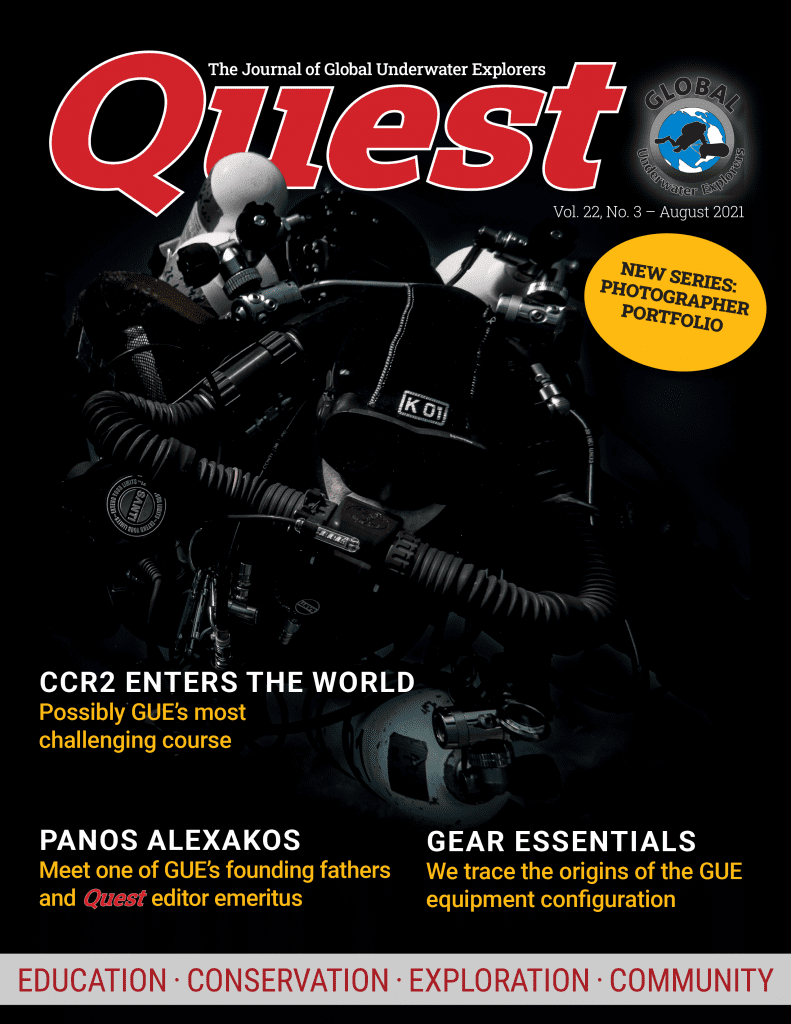
And you’re moving it to a new platform, unlike the old PDF format.
We are using a platform that provides a screen experience that kind of resembles a magazine where you can flip pages. It also works on handheld devices like iPhones and tablets, but it’s best presented on a larger screen like a laptop or desktop. Actually, an iPad may give the best reading experience.
So it will work on a smartphone, yes? I know at InDepth, 60-65% of readers access the mag via mobile.
On the big screen, you can read it one-to-one in size. On a small screen, you’ll have to zoom in. Maybe you read one column and then you will have to navigate a little bit. It’s not as responsive as a web blog, but I like the fact that it still resembles a magazine. It’s an experiment, to be honest. We may eventually go in another direction, but we are trying this for now.
What about the archives? Will members still have access to all of the old issues of Quest?
Members will still have access to all of the old issues, in addition to the new issues. There’s still 20 years’ worth of excellent information in all the old Quests. We don’t want to throw that out. That’s still one of the value points of a GUE membership. You’ll not only get this new fantastic magazine, but you’ll also have access to the archive of the old ones.
Ha! Sell, sell, sell! I am guessing that your day job as the marketing manager for Deep Dive Dubai is about to ramp up big time now that the new aquatic facility—the deepest pool in the world—has just opened. How will your day job inform your work at Quest? How do you see them working together?
First of all, it’s again a coincidence that the launch of the new Quest and launch of Deep Dive Dubai happens within the same month. I’ve been working at the aquatic center for six years now, and to be honest, we’ve been quite busy lately with the opening.
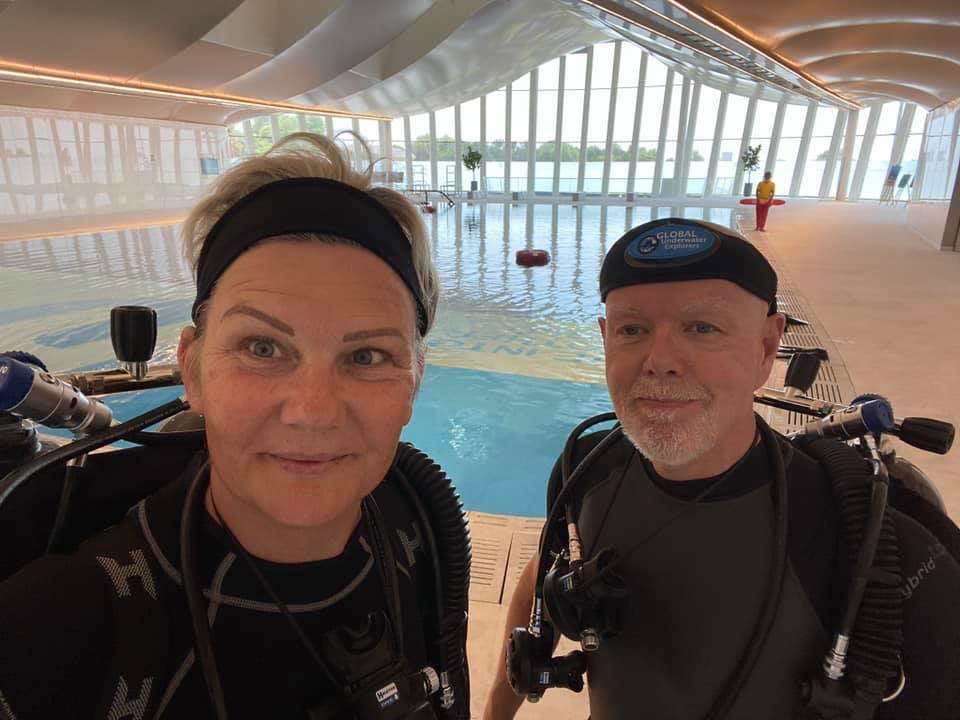
I’ll bet. So Quest is your night job then?
That’s right. I’m moonlighting as the editor of Quest. I am going to spend weekends and evenings doing it. However, it’s a quarterly publication and it’s only 48-60 pages. So, it’s not that big of a job. The biggest part of the job is not actually making the magazine, it’s all the communication with contributors, emails back and forth, and of course, editing and proofreading and workflow management. Designing the magazine is easy; that’s the fun part, where the creativity and the playfulness come in.
Well, I can’t wait to read the new issue. Thank you Jesper. We wish you and your team great success!
Dive Deeper
InDepth: Deep Dive Dubai—The Deepest Pool In The World Is Not A Pool by Jesper Kjøller
InDepth: Diving Into “Ghost Ships of the Baltic Sea” by Jesper Kjøller
GUE.TV: GUE History with Panos Alexakos
Facebook: Quest
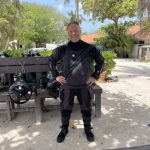
Michael Menduno/M2 is InDepth’s editor-in-chief and an award-winning journalist and technologist who has written about diving and diving technology for more than 30 years. He coined the term “technical diving.” His magazine “aquaCORPS: The Journal for Technical Diving” (1990-1996), helped usher tech diving into mainstream sports diving, and he produced the first tek.Conferences and Rebreather Forums 1.0 & 2.0. In addition to InDepth, Menduno serves as an editor/reporter for DAN Europe’s Alert Diver magazine, a contributing editor for X-Ray mag, and writes for DeeperBlue.com. He is on the board of the Historical Diving Society (USA), and a member of the Rebreather






















